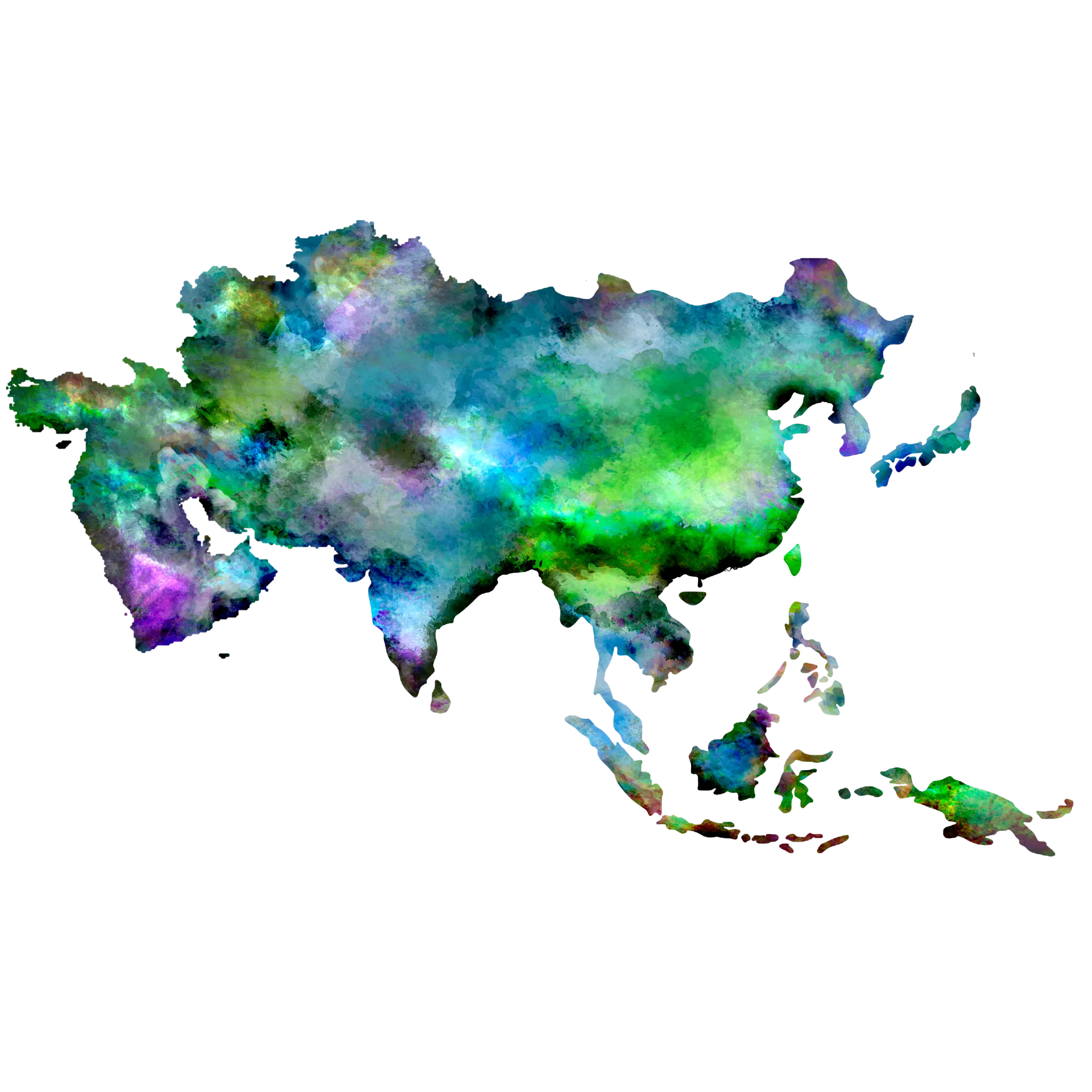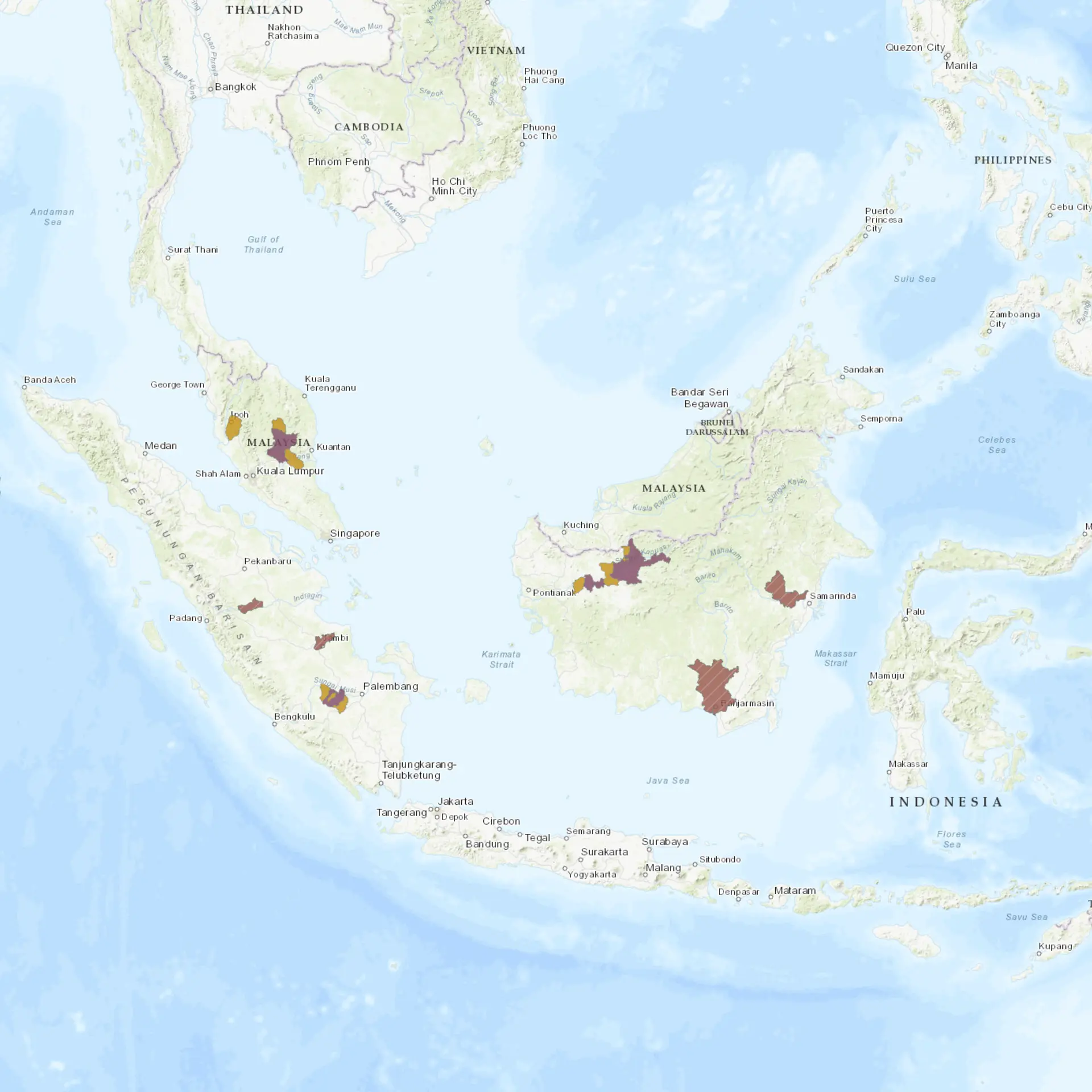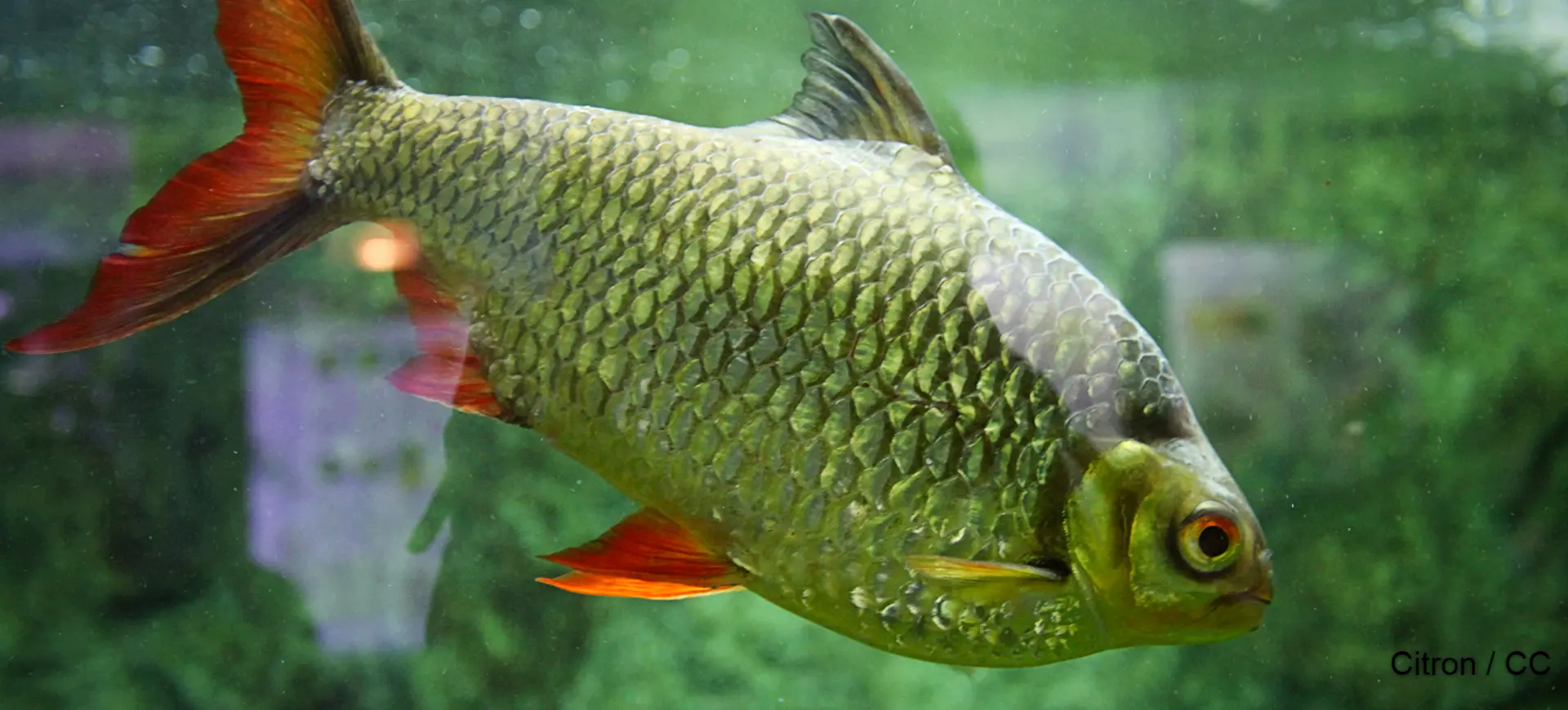Overview
The Bala Shark, scientifically known as Balantiocheilos melanopterus, is a freshwater fish native to Southeast Asia, notably found in the rivers and lakes of Thailand, Borneo, Sumatra, and the Malay Peninsula. Despite its common name, this fish is not a true shark but is named for its high dorsal fin and sleek, torpedo-shaped body that resembles that of marine sharks. Bala Sharks are silver in color with striking black margins on their dorsal, caudal, anal, and pelvic fins, contributing to their popularity in the aquarium trade.
Growing up to 14 inches in length in the wild, Bala Sharks require large tanks or ponds with plenty of swimming space when kept in captivity. They are known for their peaceful temperament and schooling nature, often seen swimming in mid-water or near the surface in groups. Their diet in the wild consists mainly of small fish, insects, and crustaceans, while in captivity, they readily accept a variety of foods, making them a versatile species for large community tanks.
The conservation status of the Bala Shark is of concern due to habitat degradation and over-collection for the aquarium trade. Efforts to breed them in captivity have successfully reduced pressure on wild populations. However, preserving their natural habitats is crucial for their long-term survival. Their striking appearance and friendly behavior make them a favorite among aquarists, yet their size and social needs pose challenges for proper care.
Taxonomy
Kingdom
Phylum
Class
Order
Family
Genus
Species
Type
Current distribution:
Bala Sharks' distribution in the wild has diminished in recent years due to habitat destruction and overfishing. While they were once common in the rivers and lakes of Southeast Asia, their numbers have decreased, leading to concerns about their status in the wild. Conservation measures and habitat restoration projects are crucial for protecting remaining populations and restoring their natural distribution.
In addition to their presence in the wild, Bala Sharks are widely distributed in the aquarium trade, where they are kept by enthusiasts worldwide. Captive breeding programs have been established to supply the aquarium trade and reduce the demand for wild-caught specimens, contributing to the conservation of the species.
Physical Description:
Bala Sharks are characterized by their elongated, torpedo-shaped bodies and silver coloration, complemented by black-edged fins. This distinctive fin coloration is an identifying feature and adds to their aesthetic appeal in aquariums. They possess large, round eyes and a slightly forked caudal fin, aiding their swift movement through the water.
Juvenile bala sharks are often more brightly colored than adults, with a more pronounced contrast between their silver bodies and blackfin margins. As they age, their overall size increases significantly, necessitating a spacious environment for proper growth and health. Bala sharks’ sleek and dynamic appearance, combined with their peaceful nature, makes them a sought-after species for large freshwater aquariums and public displays.

Lifespan: Wild: ~5 Years || Captivity: ~10 Years

Weight: Male & Female: 0.8–1.5 lbs (0.4–0.7 kg)

Length: Male & Female: 4-14 inches (11-35 cm)
Characteristic:
Native Habitat:
The Bala Shark is native to Southeast Asia’s freshwater rivers and lakes, with populations found in Thailand, Borneo, Sumatra, and the Malay Peninsula. These habitats are characterized by their tropical climate, warm temperatures and abundant vegetation. Bala Sharks prefer these environments for the ample food sources and shelter they provide.
The degradation of their natural habitats due to pollution, deforestation, and dam construction poses significant threats to wild bala shark populations. Conservation efforts are needed to protect these ecosystems and ensure the survival of the species in its native range. The preservation of these habitats is also vital for the countless other species that share the ecosystem with the bala shark.
Climate Zones:
Biomes:
WWF Biomes:
Biogeographical Realms:
Continents:
Diet:
Diet & Feeding Habits:
Bala Sharks are omnivores in their natural habitat, feeding on plankton, small fish, insects, and crustaceans. This varied diet contributes to their growth and vitality, making them opportunistic feeders that can adapt to different food sources available in their environment. In captivity, they accept various foods, including live, frozen, and flake foods, making their dietary management relatively straightforward for aquarists.
Feeding bala sharks a balanced diet that includes both plant and animal matter is essential for maintaining their health and vibrant appearance. Regular feeding of vegetables and high-quality commercial foods can help replicate their natural diet and ensure they receive all necessary nutrients. Care should be taken to avoid overfeeding, as bala sharks are prone to obesity and related health issues in captivity.
Mating Behavior:
Mating Description:
Breeding Bala Sharks in captivity is challenging due to their size and specific environmental requirements. In the wild, they spawn during the rainy season, when rising water levels and increased flow create ideal conditions for egg laying and development. Females lay eggs fertilized by males, with no parental care provided post-spawning.
In captivity, breeding requires large tanks with controlled conditions to mimic their natural spawning environment. The process is rarely successful outside of specialized breeding facilities due to the difficulty in stimulating natural breeding behaviors. Research into their reproductive habits is ongoing, aiming to improve success and reduce populations.
Reproduction Season:
Birth Type:
Pregnancy Duration:
Female Name:
Male Name:
Baby Name:
Social Structure Description:
Bala Sharks are social fish that naturally form schools in the wild, swimming and feeding cooperatively. This schooling behavior is also observed in captivity, where they exhibit signs of stress if kept alone or in small numbers. Keeping Bala Sharks in groups is essential for their well-being, as it mimics their natural social structure and provides a sense of security.
Researchers are interested in the dynamics of their social interactions, including schooling behavior and hierarchy within groups. Understanding these behaviors can aid in the management of captive populations and contribute to the development of conservation strategies that support the social needs of Bala Sharks.
Groups:
Conservation Status:
Population Trend:
The wild population of Bala Sharks is considered endangered, and numbers are declining due to habitat loss, pollution, and over-collection for the aquarium trade. These factors and the challenges of surveying their habitats complicate efforts to quantify their numbers in the wild. Conservation initiatives focused on habitat protection and restoration, along with regulations on trade, are essential for stabilizing and increasing their populations.
The widespread availability of Bala Sharks in the aquarium trade, primarily from captive breeding programs, has helped reduce the demand for wild-caught individuals. These programs play a critical role in the conservation of the species by providing a sustainable alternative for aquarists and reducing extraction pressures on wild populations.
Population Threats:
Habitat destruction is the primary threat facing Bala Sharks in the wild, with deforestation, pollution, and dam construction impacting their natural environments. The loss of these habitats reduces the availability of food and breeding sites, leading to population declines. Over-collection for the aquarium trade has historically contributed to reducing their numbers, though captive breeding efforts have begun to mitigate this impact.
Conservation strategies must address the dual challenges of habitat protection and the sustainable management of the aquarium trade to ensure the survival of Bala Sharks in the wild. Education and awareness campaigns can also play a vital role in promoting conservation efforts and responsible pet ownership.
Conservation Efforts:
Conservation efforts for Bala Sharks include habitat protection initiatives, research into their ecology and breeding habits, and the promotion of captive breeding programs. Protected areas and habitat restoration projects can help preserve the natural environments essential for their survival. Regulations on the aquarium trade, including encouraging captive-bred specimens, are also crucial in reducing pressure on wild populations.
Collaboration between conservation organizations, governments, and the aquarium industry is necessary to develop and implement effective conservation strategies. Public education on the ecological importance of Bala Sharks and their challenges can foster support for these initiatives, contributing to the long-term preservation of the species.
Additional Resources:
Fun Facts
- Bala Sharks are not true sharks but are named for their shark-like appearance.
- They can jump out of the water, so aquariums housing them must be securely covered.
- Despite their endangered status in the wild, bala sharks are among the most popular fish in the aquarium trade.
- They are known for their peaceful demeanor, making them excellent community tank members.
- Bala Sharks have a high growth rate, quickly outgrowing small aquariums.
- Their adaptability to different water conditions contributes to their popularity in captivity.
- Bala Sharks live longer in captivity than in the wild when properly cared for.
- Their preference for schooling makes them a fascinating species to observe in large aquariums or ponds.
- Conservation efforts for Bala Sharks highlight the importance of sustainable practices in the aquarium trade.
- They play a role in controlling mosquito populations in their natural habitat by feeding on larvae.








